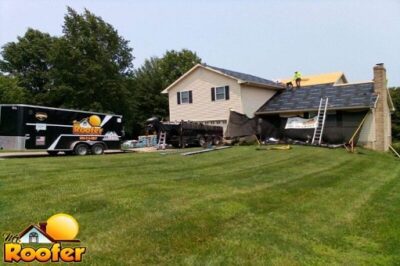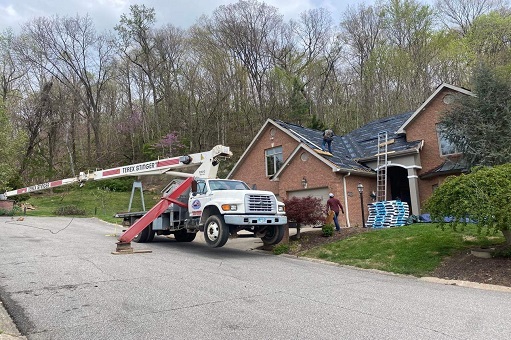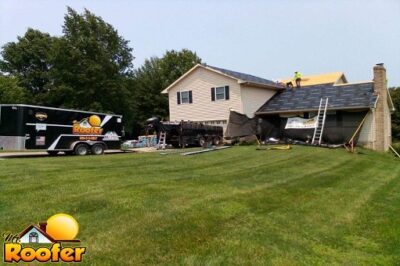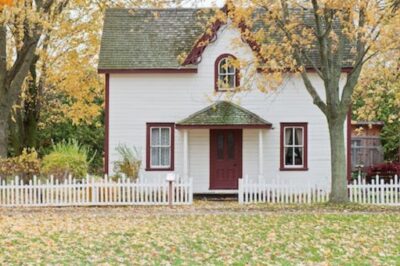Roofer
If you’re in the process of building a new home, there are a ton of decisions you’ll need to make. One of the most important is the type of roof style you want. There are so many different options out there, each with their own unique look and benefits.
Do you want a classic gable roof? Or maybe something more modern, like a flat roof? Whatever your preferences, we’ve got you covered with this handy guide to 10 different types of roof styles. So sit back, relax, and let’s explore the wonderful world of roofing together!
Gable Roof:
One of the most common types of roofs for homes is the gable roof. It features two sloping sides that meet at a ridge in the middle. This design makes it easy for rainwater and snow to run off the roof. Gable roofs can be made from a variety of materials, including metal roofing, shingles, and tiles.
Hip Roof:
A hip roof is another popular option for homeowners. It has four sides that slope downward, creating a pyramid-like shape. Hip roofs are known for their stability and durability. They are also great for areas that receive a lot of wind or rain, as the sloping sides help to deflect these elements.s Here.
Mansard Roof:
A gambrel roof is similar to a mansard roof but has two sloping sides instead of four. It is commonly seen on barns and other agricultural buildings but can also be used on residential properties. Gambrel roofs are great for maximizing space in the upper levels of a home.
Gambrel Roof:
Asking a potential roofing contractor how long they have been in business is an important question to help determine their level of experience and reputation. A roofing contractor with a long-standing business is likely to have the expertise and skills necessary to provide high-quality roofing services.
Moreover, a contractor who has been in the business for a significant period is likely to have a solid reputation in the industry. They may have built long-lasting relationships with suppliers and have a history of satisfied customers.
While experience alone doesn’t guarantee quality workmanship, it is an important factor to consider when selecting a contractor for your roofing project. A roofing contractor with a proven track record of successful projects and satisfied clients is more likely to provide the high-quality work you expect.
Flat Roof:
As the name suggests, a flat roof is completely flat and doesn’t have any slopes or angles. Flat roofs are typically made from materials like rubber or PVC, which provide excellent insulation. They are a popular choice for modern homes and buildings.
Shed Roof:
A shed roof is a simple design that slopes downward in one direction. It is commonly used on sheds and other small outbuildings. Shed roofs are easy to construct and provide good protection from the elements.
Butterfly Roof:
The butterfly roof is a modern design that features two upward-sloping sides that meet in the middle. This creates a V-shape that resembles the wings of a butterfly. Butterfly roofs are often used on eco-friendly homes and provide excellent insulation.
Saltbox Roof:
The saltbox roof is a colonial-style design that features a long, sloping roofline on one side and a short, steep roofline on the other. It is commonly seen on historic homes and adds a touch of charm and character.
Curved Roof:
A curved roof is a unique design that adds a modern touch to any property. It features a gentle curve that runs from one side of the roof to the other. Curved roofs are often made from metal roofing and provide excellent insulation.
Pyramid Roof:
A pyramid roof is similar to a hip roof but has a square shape instead of a rectangular one. It is commonly used on small homes and provides excellent stability and durability.
Conclusion
In conclusion, when it comes to building a new home, choosing the right type of roof style is crucial for the safety, durability, and overall aesthetic appeal of your property. With so many different types of roofs available, from the traditional gable and hip roofs to the more modern butterfly and curved roofs, it can be challenging to decide which one to choose. However, by working with a professional roofing contractor like Mr. Roofer, you can get the guidance and expertise you need to make the right choice.
Mr. Roofer has years of experience helping homeowners choose the best type of roof style and materials for their homes. They understand the local climate and building codes, and can recommend the most cost-effective and energy-efficient options for your specific needs. Plus, they can handle all aspects of the roofing process, from installation to maintenance and repairs, so you can have peace of mind knowing your roof is in good hands.In short, if you’re looking for the best type of roof style for your new home, working with a professional roofing contractor like Mr. Roofer is the way to go. Contact them today to schedule a consultation and get started on your roofing project.
There is no single “best” type of roof that applies to all situations. The ideal roof type for your home will depend on various factors such as your budget, local climate, aesthetic preferences, and the design of your home.
The frequency of roof replacement depends on several factors, including the type of roof, the quality of the materials, the climate in the area, and how well the roof has been maintained over the years.
The three main types of roof are flat roofs, pitched roofs, and arched roofs. Flat roofs have a horizontal or nearly horizontal surface, pitched roofs have a sloping surface, and arched roofs have a curved or arch-shaped surface. Each type has its own advantages and disadvantages, and the choice of roof type depends on various factors such as climate, building design, and personal preference.
A hip roof has four sloping sides that meet at the top. Its advantages include excellent stability and durability, suitability for high-wind areas, and a more modern and unique look.
A gable roof has two sloping sides that meet at the ridge in the middle. Its advantages include easy water runoff and snow removal, cost-effectiveness, and suitability for high-wind areas.






0 Comments